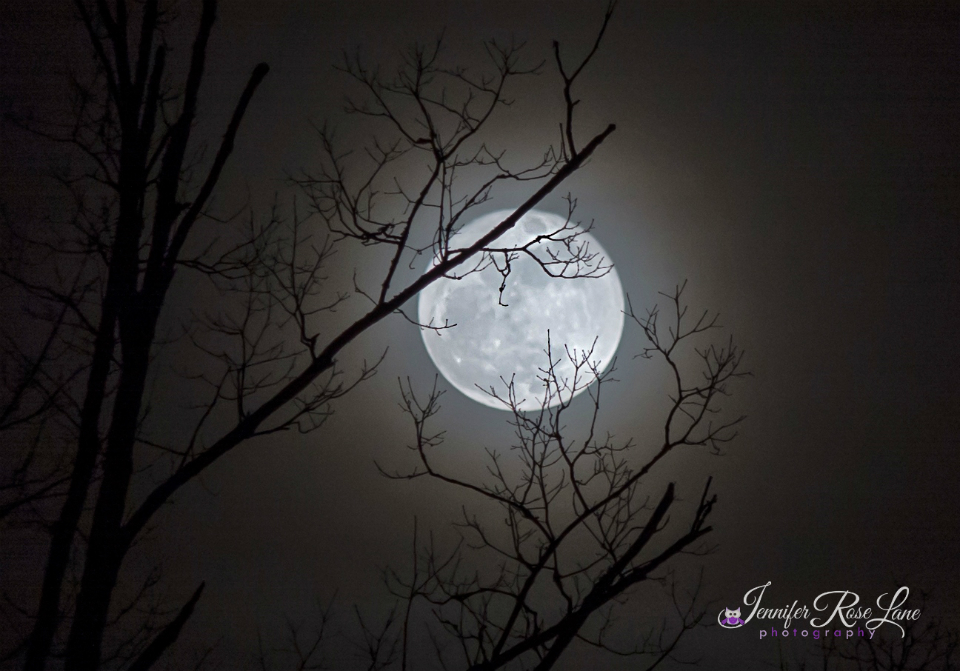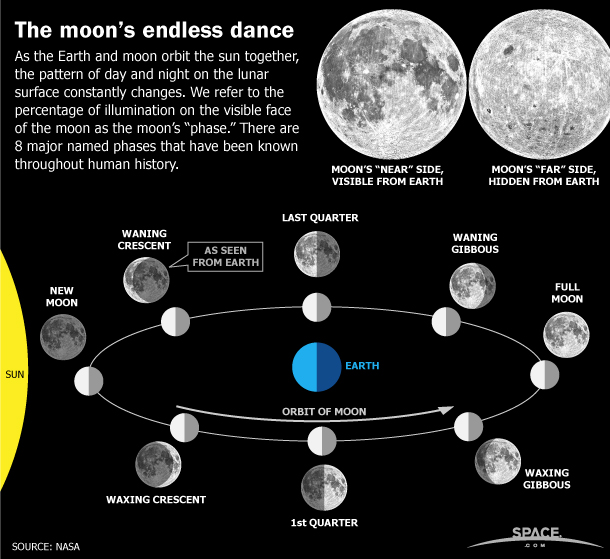From Strawberries to Wolves, See the Full Moon Names of 2016

With the first full moon of 2016 set to rise on Saturday, it's the right time to take a look at each full moon's distinctive names for the year to come.
Since the lunar (synodic) month is roughly 29.5 days in length on average, the dates of the full moon shift from year to year. Here is a listing of all the full-moon names, as well as their corresponding dates and times (for the Eastern Time zone) for the next twelve months. [Watch: The Full Moon - Why It Happens and What It Means]
Jan. 23, 8:46 p.m. EST — The Full Wolf Moon. Amid the cold and deep snows of midwinter, the wolf packs howled hungrily outside Indian villages. This moon was also known as the Old Moon or the Moon after Yule. In some tribes it was called the Full Snow Moon, but most applied that name to the next moon.
Feb. 22, 1:20 p.m. EST — The Full Snow Moon. Usually the heaviest snows fall in this month. Hunting becomes very difficult, and hence to some tribes this was the Full Hunger Moon.
March 23, 8:01 a.m. EDT — The Full Worm Moon. In this month the ground softens and the earthworm casts reappear, inviting the return of the robins. The more northern tribes knew this as the Full Crow Moon, when the cawing of crows signals the end of winter, or the Full Crust Moon, because the snow cover becomes crusted from thawing by day and freezing at night. The Full Sap Moon, marking the time for tapping maple trees, is another variation. This is also the Paschal Full Moon; the first full moon of the spring season. The first Sunday following the Paschal Moon is Easter Sunday, which indeed will be observed four days later on Sunday, March 27.
April 22, 1:24 a.m. EDT — The Full Pink Moon. The kind of grass that is called pink or wild ground phlox is one of the earliest, widespread flowers of the spring. Other names for this same moon were the Full Sprouting Grass Moon, the Egg Moon and — among coastal tribes — the Full Fish Moon, when the shad came upstream to spawn.
May 21, 5:15 p.m. EDT — The Full Flower Moon. Flowers are abundant everywhere this time of year. This moon was also known as the Full Corn Planting Moon or the Milk Moon. Under the old rules originally set forth by the Maine Farmer’s Almanac, this is also a Blue Moon. Typically, there are three full moons for each season, but sometimes a season will have four full moons. This is the case for spring 2016; the full moon on June 20 occurs less than 12 hours before the official start of the summer season, making that moon the fourth full moon of the spring. Under the Almanac's rules, the third full moon of a season that has four is referred to as the Blue Moon. [Moon Master: An Easy Quiz for Lunatics]
Breaking space news, the latest updates on rocket launches, skywatching events and more!
June 20, 7:03 a.m. EDT — The Full Strawberry Moon. Known to every Algonquin tribe by that name. Europeans called it the Rose Moon.
July 19, 6:57 p.m. EDT — The Full Buck Moon, when the new antlers of buck deer push out from their foreheads in coatings of velvety fur. This moon was also often called the Full Thunder Moon, for the season with the most frequent thunderstorms. Sometimes also called the Full Hay Moon.
Aug. 18, 5:27 a.m. EDT — The Full Sturgeon Moon, when that large fish of the Great Lakes and other major bodies of water like Lake Champlain is most readily caught. A few tribes knew it as the Full Red Moon because the moon rises looking reddish through sultry haze, or as the Green Corn Moon or Grain Moon.
Sept. 16, 3:05 p.m. EDT — The Full Harvest Moon. Traditionally, this designation goes to the full moon that occurs closest to the autumnal equinox. At the peak of the harvest, farmers can work into the night by the light of this moon. Usually the full moon rises an average of 50 minutes later each night, but for the few nights around the Harvest Moon, the moon seems to rise at nearly the same time each night: just 25 to 30 minutes later across the United States, and only 10 to 20 minutes later for much of Canada and Europe. Corn, pumpkins, squash, beans and wild rice — the chief Indian staples — are now ready for gathering.
Oct. 16, 12:24 a.m. EDT — The Full Hunter's Moon. With the leaves falling and the deer fattened, it is time to hunt. Since the fields have been reaped, hunters can ride over the stubble and can more easily see the fox and other animals that have come out to glean, which can be caught for a thanksgiving banquet after the harvest. [The Moon's Phases Explained (Infographic)]
Nov. 14, 8:52 a.m. EST — The Full Beaver Moon. Time to set beaver traps before the swamps freeze to ensure a supply of warm winter furs. Another interpretation suggests that the name Beaver Full Moon comes from the fact that the beavers are now active in their preparation for winter. Also called the Frosty Moon. The moon will also be at an extreme perigee this day at 6:00 a.m., at a distance of 221,524 miles (356,509 kilometers) from Earth. It will truly be a "Supermoon," as the last time the moon came this close to Earth was on Jan. 26, 1948. Large ocean tides can be expected on Jan. 14, 15, 16 and 17 from the coincidence of perigee with full moon.
Dec. 13, 7:06 p.m. EST — The Full Cold Moon among some tribes, the Full Long Nights Moon. In this month the winter cold tightens its grip, and the nights are at their longest and darkest. Also sometimes called the Moon before Yule (Yule is Christmas, and this time the moon is only just before it). The term Long Night Moon is a doubly appropriate name because the midwinter night is indeed long, and the moon is above the horizon a long time. The midwinter full moon takes a high trajectory across the sky, opposite to the low sun.
Editor's note: If you capture an amazing full moon photo that you'd like to share with us and our news partners for a story or gallery, send images and comments in to managing editor Tariq Malik at spacephotos@space.com.
Joe Rao serves as an instructor and guest lecturer at New York's Hayden Planetarium. He writes about astronomy for Natural History magazine, the Farmer's Almanac and other publications, and he is also an on-camera meteorologist for News 12 Westchester, N.Y. Follow us @Spacedotcom, Facebook or Google+. Originally published on Space.com.

Joe Rao is Space.com's skywatching columnist, as well as a veteran meteorologist and eclipse chaser who also serves as an instructor and guest lecturer at New York's Hayden Planetarium. He writes about astronomy for Natural History magazine, Sky & Telescope and other publications. Joe is an 8-time Emmy-nominated meteorologist who served the Putnam Valley region of New York for over 21 years. You can find him on Twitter and YouTube tracking lunar and solar eclipses, meteor showers and more. To find out Joe's latest project, visit him on Twitter.



